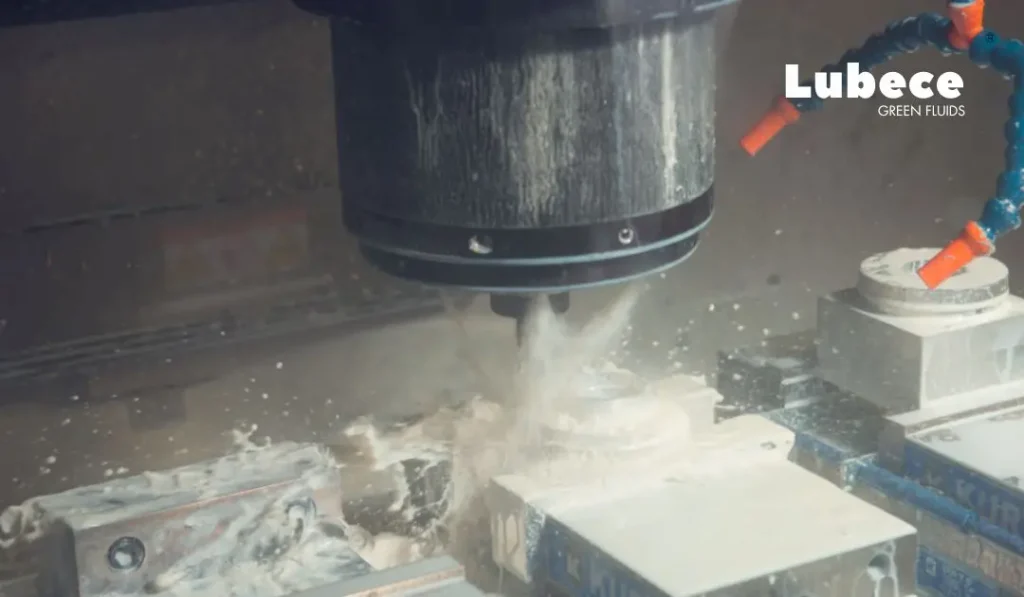Introduction
In the realm of metalworking, precision is paramount, and achieving that precision requires the right tools and techniques. One often overlooked but crucial aspect of metal cutting is the use of cutting fluids. These fluids play a pivotal role in enhancing the efficiency, tool life, and surface finish of metal-cutting operations. In this comprehensive guide, we will delve into the world of cutting fluids, exploring their significance, types, and applications.
Importance of Cutting Fluids
Metal cutting is a complex process that generates heat and friction, leading to increased wear on cutting tools and reduced machining accuracy. Cutting fluids, also known as metalworking fluids (MWFs), are substances applied to the cutting zone to dissipate heat, lubricate the tool and workpiece interface, and facilitate the removal of metal chips. The judicious use of cutting fluids not only improves the overall efficiency of the machining process but also extends the lifespan of cutting tools.
Types of Cutting Fluids:
- Straight Oils: Straight oils, also known as neat oils, are petroleum-based oils used undiluted in metal cutting operations. They provide excellent lubrication and cooling properties, making them suitable for heavy-duty machining processes. Straight oils are commonly used in operations like deep hole drilling and broaching, where high lubricity is essential.
- Soluble Oils: Soluble oils, as the name suggests, are oil-based fluids that can be mixed with water to form an emulsion. This emulsion offers both the cooling properties of water and the lubricating properties of oil. Soluble oils are versatile and find applications in various machining operations, including milling, turning, and grinding.
- Semi-Synthetic Fluids: Semi-synthetic fluids, also known as semi-chemical fluids, are a blend of synthetic additives and mineral oil. These fluids strike a balance between the lubrication of straight oils and the cooling ability of water-based fluids. They are suitable for a wide range of machining processes, providing improved tool life and surface finish.
- Synthetic Fluids: Synthetic fluids are entirely chemical formulations without any mineral oil content. They are designed to offer excellent cooling properties while minimizing environmental impact. Synthetic fluids are often preferred in high-speed machining applications, providing stability at elevated temperatures and reducing friction.
Common Cutting Fluid Additives:
In addition to the base fluids mentioned above, cutting fluids may contain various additives to enhance their performance. Some common additives include:
- Extreme Pressure (EP) Additives: EP additives are included to reduce friction and wear during extreme machining conditions. They form a protective layer on the tool and workpiece surfaces, preventing metal-to-metal contact.
- Anti-Weld Additives: Anti-weld additives are crucial in preventing the welding of metal chips to the cutting tool. This helps maintain a clean cutting edge, reducing tool wear and improving surface finish.
- Rust Inhibitors: Rust inhibitors are included to protect both the machine and workpiece from corrosion. They are particularly important when working with ferrous metals.
- Biocides: Biocides are added to cutting fluids to prevent the growth of bacteria and fungi, which can lead to unpleasant odors, degradation of the fluid, and health hazards.
Applications of Cutting Fluids:
- Turning and Milling: Cutting fluids are extensively used in turning and milling operations to optimize tool performance and achieve precise finishes. The choice of cutting fluid depends on factors such as material being machined, cutting speed, and the severity of the operation.
- Grinding: In grinding operations, where high temperatures are generated due to the abrasive nature of the process, cutting fluids play a crucial role in preventing thermal damage to the workpiece and maintaining the integrity of the grinding wheel.
- Drilling and Tapping: These operations often involve high-speed cutting, and the use of cutting fluids is essential to dissipate heat and reduce friction. Proper lubrication is crucial to prevent tool breakage and achieve accurate hole dimensions.
- Broaching and Sawing: Heavy-duty operations like broaching and sawing benefit from the high lubricity provided by cutting fluids. This helps reduce tool wear and improves the overall efficiency of the cutting process.
Environmental Considerations
While cutting fluids are indispensable in metalworking, there are environmental concerns associated with their usage. The disposal of used cutting fluids and their impact on the environment has led to the development of eco-friendly alternatives and recycling methods. Additionally, the choice of cutting fluid with minimal environmental impact, such as synthetic fluids, has become increasingly important.
Conclusion:
In the intricate world of metal cutting, the role of cutting fluids cannot be overstated. These fluids, in their various formulations, contribute significantly to the efficiency, precision, and sustainability of metalworking processes. Understanding the different types of cutting fluids, their additives, and their applications is crucial for machinists and manufacturers seeking to optimize their operations. As technology advances and environmental awareness grows, the future of cutting fluids is likely to involve further innovations aimed at achieving a perfect balance between performance and sustainability.










